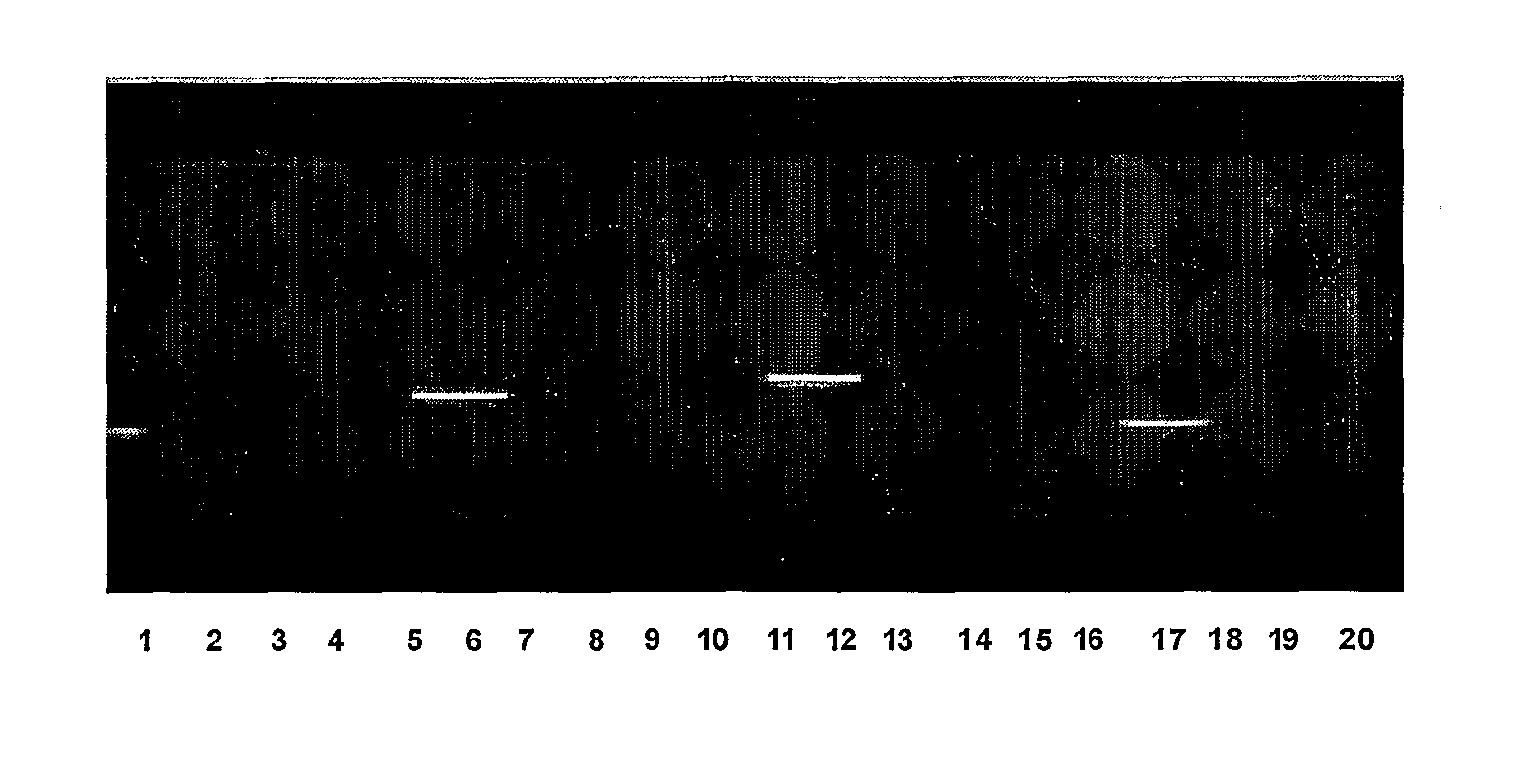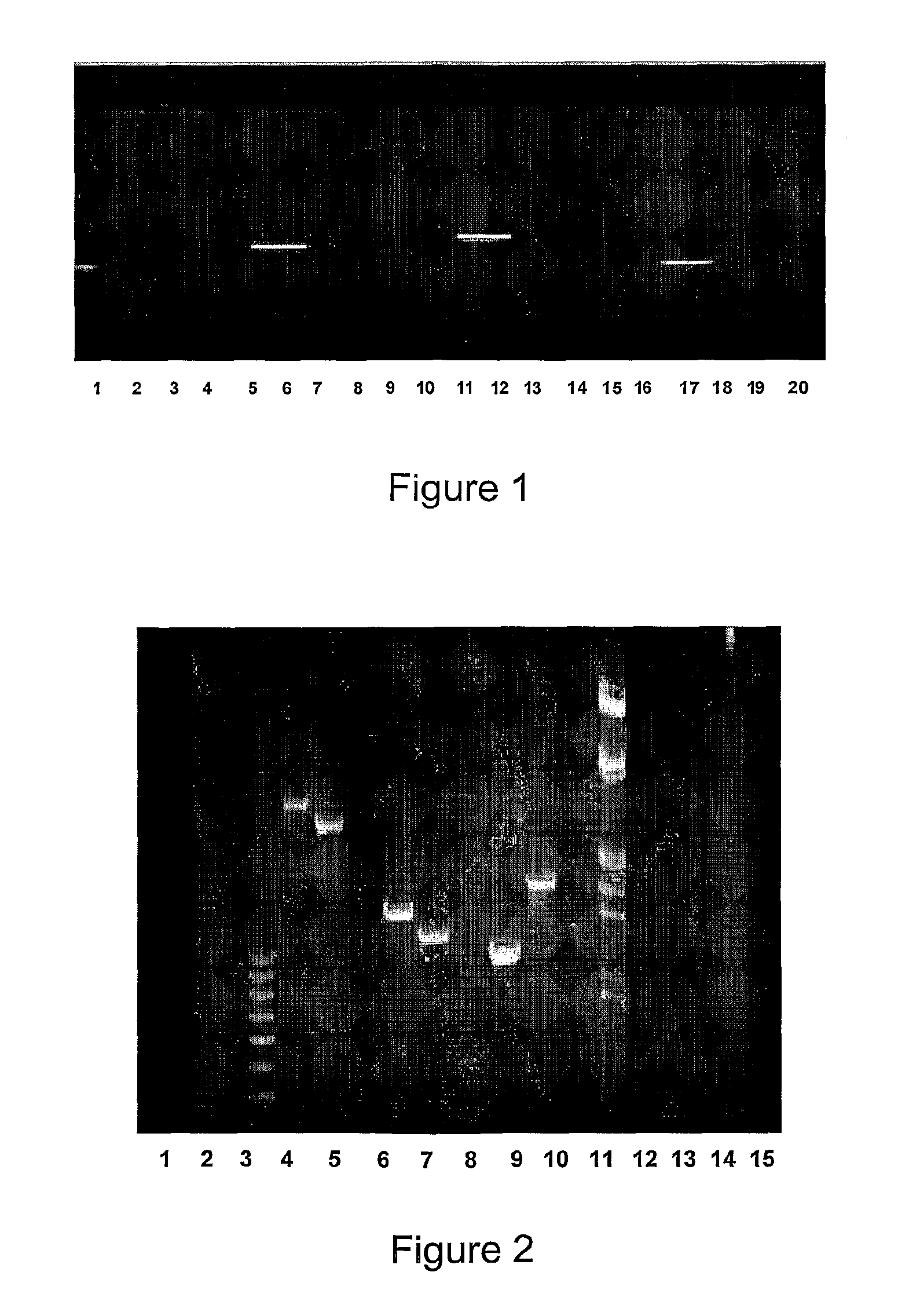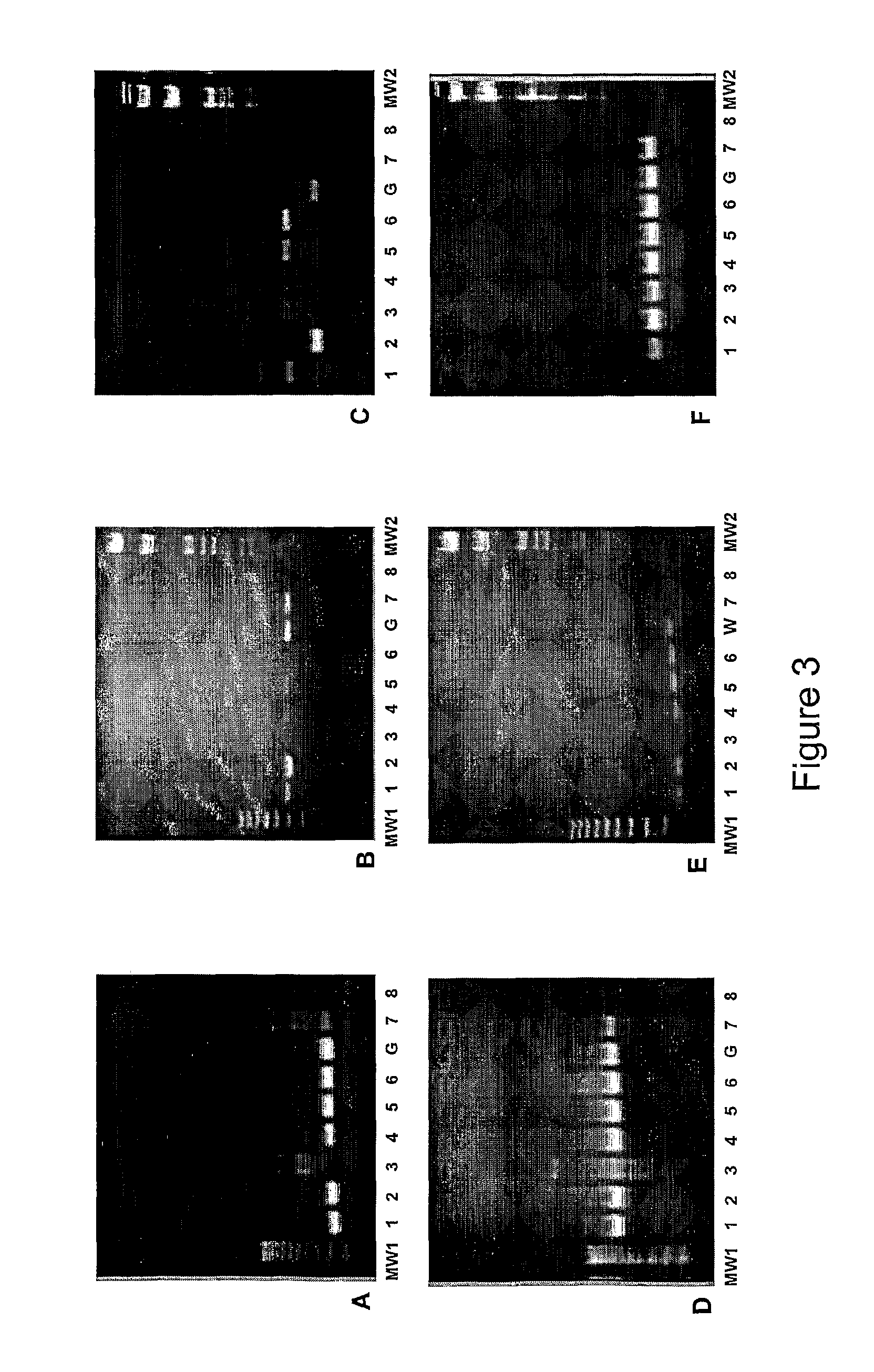Target genes for strain-specific diagnostic of Ehrlichia ruminantium and use thereof
a technology of strain-specific diagnostic and target genes, which is applied in the direction of liquid/fluent solid measurement, fluid pressure measurement, peptides, etc., can solve the problems of threatening the american mainland, carries a high risk of uncontrolled clinical reactions, and inadvertent spread of undesirable parasites and viruses, and can cause up to 80% mortality in susceptible animals
- Summary
- Abstract
- Description
- Claims
- Application Information
AI Technical Summary
Benefits of technology
Problems solved by technology
Method used
Image
Examples
example 1
General Features and Sequence Reference
[0047]For each strain, purified DNA was broken by sonication to generate fragments of differing sizes. After filling up the ends with Klenow polymerase, DNA fragments ranging from 0.5 kb to 4 kb were separated in a 0.8% agarose gel and collected after gelase (Epicentre) digestion of a cut agarose band. Blunt-end DNA fragments were inserted into pBluescript II KS (Stratagene) digested with EcoRV and dephosphorylated. Ligation was performed with the Fast-Link DNA Ligation kit (Epicentre) and competent DH 10B E. coli were transformed prior to colony isolation on LB-agar+Ampicillin+Xgal+IPTG. About 15000 clones were isolated for each strain of E. ruminantium. Plasmidic DNA from recombinant E. coli strains was extracted according to the alkaline lysis method and inserts were sequenced on both strands using universal forward and reverse M13 primers and the ET DYEnamic terminator kit (Amersham). Sequences were obtained with ABI 373 et ABI 377 automate...
example 2
Identification of Target Genes for Strain Specific Differential Diagnostic in the Gardel and Welgevonden Strains of E. Ruminantium
[0049]The differential analysis of the whole genomes of E. ruminantium strains Gardel and Welgevonden showed the presence of coding sequences which are present in only one of the strains and not in the other. Some of the CDS which are unique to E. ruminantium strain Gardel and found only in the genome of this strain are presented in Table 1 (Seq ID NO 1 to Seq ID NO 5). One of the CDS which is unique to E. ruminantium strain Welgevonden and found only in the genome of this strain is presented in Table 1 (Seq ID NO 6). Since these sequences are unique to one or the other strain, they clearly represent targets for the differential detection of E. ruminantium strain Gardel versus E. ruminantium strain Welgevonden.
[0050]The differential analysis of the whole genomes of E. ruminantium strains Gardel and Welgevonden also showed the presence of coding sequences...
example 3
Differential Detection of Strain Gardel and Strain Welgevonden of E. Ruminantium Based on PCR Amplification Patterns of the Target Genes
[0052]Differential PCR identification of strains Gardel and Welgevonden of E. ruminantium was achieved using primers described in Table 2.
[0053]
TABLE 2SizeTarget genePrimer nameSEQ IDOrientation(mer)CDSErum 1P-Erum 1-ASEQ ID #16Sense21ERGA_CDS_04350Erum 1P-Erum 1-BSEQ ID #17Antisense21ERGA_CDS_04350Erum 2P-Erum 2-ASEQ ID #18Sense25ERGA_CDS_4990Erum 2P-Erum 2-BSEQ ID #19Antisense23ERGA_CDS_4990Erum 3P-Erum 3-ASEQ ID #20Sense20ERGA_CDS_05600Erum 3P-Erum 3-BSEQ ID #21Antisense20ERGA_CDS_05600Erum 4P-Erum 4-ASEQ ID #22Sense19ERGA_CDS_05610Erum 4P-Erum 4-BSEQ ID #23Antisense22ERGA_CDS_05610Erum 5P-Erum 5-ASEQ ID #24Sense23ERGA_CDS_07600Erum 5P-Erum 5-BSEQ ID #25Antisense19ERGA_CDS_07600Erum 6P-Erum 6-ASEQ ID #26Sense26ERWE_CDS_08340Erum 6P-Erum 6-BSEQ ID #27Antisense23ERWE_CDS_08340Erum 7P-Erum 7-ASEQ ID #28Sense25ERGA_CDS_01350ERWE_CDS_01390Erum 7P-Erum...
PUM
| Property | Measurement | Unit |
|---|---|---|
| pH | aaaaa | aaaaa |
| volume | aaaaa | aaaaa |
| size | aaaaa | aaaaa |
Abstract
Description
Claims
Application Information
 Login to View More
Login to View More - R&D
- Intellectual Property
- Life Sciences
- Materials
- Tech Scout
- Unparalleled Data Quality
- Higher Quality Content
- 60% Fewer Hallucinations
Browse by: Latest US Patents, China's latest patents, Technical Efficacy Thesaurus, Application Domain, Technology Topic, Popular Technical Reports.
© 2025 PatSnap. All rights reserved.Legal|Privacy policy|Modern Slavery Act Transparency Statement|Sitemap|About US| Contact US: help@patsnap.com



